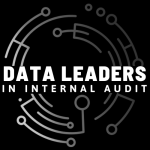
Company spendings under scrutiny - 3 ways to immediately save money in procurement
(October 10, 2023 9AM NY time)
FREE TUESDAY WEBCLASS 9AM EST
We are discussing ways companies can lose money in procurement through fraud, errors, and waste, and how to detect them.
Examples are bogus invoices, bad payment terms, or fraudulent attempts to divert payments into other bank accounts.
Meet Your Host
This week, let's welcome our guest speake: Jens Kettler - Head of Business Unit Risk & Compliance at VOQUZ Labs AG


JENS KETTLER
Jens is the head of the business unit risk and compliance with VOQUZ Labs AG (Berlin, Germany). His career started at the software company SAP, where he was a security consultant and product manager for SAP security. Later he was responsible for the SAP security products and business unit at SECUDE, which was acquired by SAP (now SAP Single Sign-On).
He founded REMEDYNE in 2012 and developed a fraud prevention and internal controls software, the company was acquired by VOQUZ Labs early 2023. He also co-founded sanctions.io, a provider of data for business partner screening.
CLAIRE WORLEDGE
Claire spent 10 years working for Deloitte, managing the data analytics team. In 2010, she created Aufinia. Aufinia has worked for 50 different companies that use SAP over the years.
Claire is a Certified Information Systems Auditor (CISA), Certified Fraud Examiner (CFE) and Certified ACL Data Analyst (ACDA). Aufinia is a global OEM partner with QLIK and also a Galvanize reseller partner for Vietnam and China. Claire has a Masters in IT from University College London, as well as a Bachelors in Biochemistry.

Thanks For All The Amazing Content!
“Thanks for all the amazing content in the webclasses. We have learned quite a lot and this is helping the team to get going with SAP data analytics, as well as challenging our consulting vendors!”
Celia, Head of Internal Audit
What We Cover in Our Webclasses
During our Data Leaders In Internal Audit Tuesday Webclasses we are gaining insights on the following:
How do the Big 4 firms do data analytics?
What does the IIA, ISA, ACFE and ISACA say about data analytics?
What risks should be avoided when using data analytics in internal audit?
How can we train our auditors so that they can successfully use data analytics in their work?
What are the most obvious fraud schemes that data analysts need to be aware of?
What do “normal“ auditors and data analysts need to understand to make an efficient team?
Which data do you need to extract from SAP and how should it be interpreted?
How can we leverage data to see risks in the entity and better prepare the audit?